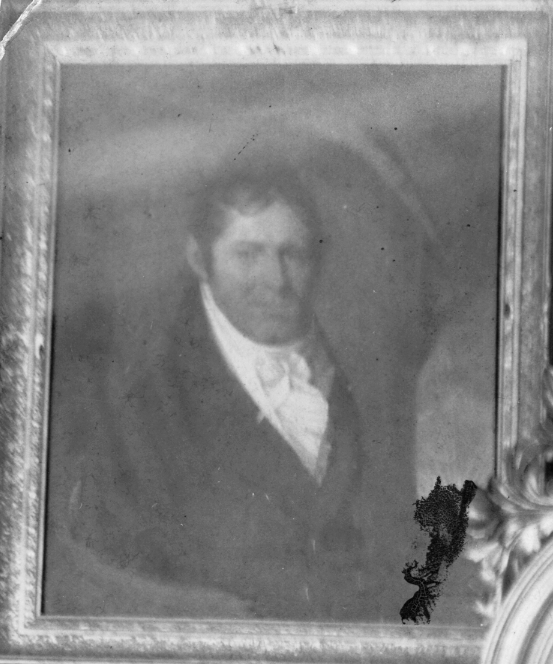
Robertson, Alexander
Founding the law firm “Robertson & Blacklock” and building the grand Struan Estate in Asheville, his influence extended from elegant townhouses to large plantations.
Lawyer, Planter, and Visionary. Alexander Robertson was born on September 11, 1804, in Charleston, South Carolina. He was the only son of William Robertson and Susannah Boone Freer. His primary plantation was in St. Thomas and St. Denis Parish. His Charleston townhouse, located at 10 Vanderhorst Wharf, showcased a Neoclassical design and a beautiful interior.
He was often observed wearing a beaver fur top hat that had a tall cylindrical shape with a flat crown. The hat was crafted by famed London hatmaker Robert Heath and bought by Robertson in 1820. It often drew the attention of onlookers who recognized its quality. In addition to his hat, Robertson often chose clothing that combined old charm with his own subtle personal touches. He favored rich fabrics and colors that conveyed a sense of genteel southern fashion. His accessories were always chosen with care, from pocket watches to cufflinks, and in his later years, his wooden cane.
In 1848, Robertson started the law firm of Robertson & Blacklock with his brother-in-law and cousin John Freer Blacklock. The firm specialized in handling bonds, mortgages, and serving as executor of wills and played an important role during the Civil War. However, Robertson’s entrepreneurial spirit extended beyond his firm. Between 1826 and his death in 1888, he engaged in the purchase and sale of over forty properties in Charleston and six plantations to the east in the Lowcountry.
In the 19th century, the mountains of Ashevillle became a retreat for affluent families seeking respite from summer heat and malaria in South Carolina. Robertson visited his friend, Daniel Blake, at his estate in South Asheville and decided to buy a several thousand acre estate nearby. Robertson bought this property and called it Struan, after his ancestral home in Scotland. The Struan house, built on a hill overlooking a winding stream and mountain range, was a classic example of 19th century luxury. The Greek Revival, 16-room house featured high ceilings, a stone-paved court, and a beautiful view of the mountains. Among Robertson’s friends who dined at Struan were Confederate General and later South Carolina Governor Wade Hampton, Governor Robert Allston, Joel Poinsett, the Duke de Choiseul of Paris, Edmund Molyneux of the British Consulate, distinguished lawyer James Petigru of Charleston, and Thomas Atkinson, the third Episcopal bishop of North Carolina. Robertson was also a devout Episcopalian worked with Daniel Blake to start Calvary Episcopal Church in South Asheville.
Robertson owned about one-hundred enslaved people in South Carolina and seventeen at Struan, most of whom came from his plantation in St. Thomas and St. Denis Parish.
The Civil War brought tragedy to Robertson’s life. His only son, Alexander Jr., a planter, soldier, and blockade runner, was killed in 1864 in the battle of Haw’s Shop in Virginia. His son-in-law was also killed at the end of the war at Struan for refusing to give up his golden watch to Union soldiers. In a letter to Mrs. M.A. Petigru, on August 10th, 1864, Robertson writes; “…only one thing is clear and that is the more property one owns, the sooner they will be ruined if the war lasts…”
The Civil War was detrimental to Robertson’s wealth. Although he lived for 22 more years, Robertson wrote his final will in 1866, perhaps because he expected that he would never financially recover. He writes, “Whereas the late war having left my estate in a complicated and near ruinous condition, and I cannot provide for my dear and dutiful Daughters in that manner it would be my desire to do: and I can only now give them all and any of my estate that may remain after the payment of my just debts. Therefore order and direct my just debts to be paid and I give will and bequeath to my said daughters Antonia and Susan all and whatever may remain after the payment of my said debts.”
Alexander Robertson’s legacy extends beyond his lifetime. His granddaughter, Susan Allan Wetmore, inherited Struan and, in 1900, founded Christ School, a boy’s preparatory school, on the property.
Tucker, Harry Z. “Struan,” The State, Columbia, S.C., 1947.
W. Eric Emerson, Sons of Privilege: The Charleston Light Dragoons in the Civil War (2005), 171.
Frederick A Ford, “Census of the City of Charleston, South Carolina, For the Year 1861.”
Leroy Burnell, “Historic Charleston Property at 78 East Bay St”, The Post and Courier, May 10, 2013 Robertson Blacklock & Company Legal Papers, 1848-1866, South Carolina Historical Society
Index of Deeds, Charleston County and Adjacent Counties, South Carolina Department of Archives and History Leland Little Auctions, Lot 2142: Rare Charleston/Baltimore Leather Top Hat Box and Beaver Top Hat
“Update on Arden: Some Notes on Enslaved Labor in Buncombe County,” Buncombe County Special Collections, January 17, 2019
Letter, August 10 1864, Alexander Robertson Papers, South Caroliniana Library
“Will and Last Testament of Alexander Robertson, 1866” South Carolina Department of Archives and History
Allston, Robert. Letter to Alexander Robertson. In “Allston Family Papers, 1730-1901,” South Carolina Historical Society.






